The Top 7... Most disappointing launch games
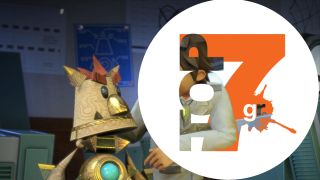
Great expectations
It doesn't feel like it, but it wasn't all that long ago that the PS4 and Xbox One launched us into a new generation of digital entertainment. As with every previous console iteration, there will eventually be dozens of games that make these consoles worth owning. But when the systems debut, youre left with a small handful of launch games to play. Some are good, a rare few are even great--and then there are those that are more painfully disappointing than outright bad.
After buying a new system, you want to play something that really showcases what your new hardware can do. Thanks to pre-release hype or the talent associated with a game, you expect a quality launch game worth all the money you just spent. And when it doesnt deliver, it can be more frustrating than wasting money on a game thats simply crappy. These seven games all soured what should have been an exciting day one. Perhaps someone will learn from these mistakes by the time the PS5 and Xbox Omega go on sale.
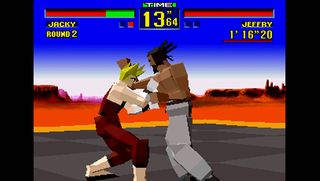
7. Virtua Fighter (Saturn)
Sega was riding high on the Genesis success as the 32-bit era arrived, and it already had a line of arcade games previewing what its next console could pull off. For a time, Virtua Fighter was the best-looking game around, pushing the fighting genre into three dimensions and introducing millions to polygonal graphics. It was the perfect game to launch with the Sega Saturn--but the companys brash business strategy hurt both the Virtua Fighter franchise and the Saturn for some time.
When challenged by Sonys upstart PlayStation, Sega took the questionable tactic of surprise-launching the Saturn in May instead of its planned September release, which meant Virtua Fighter was shipped in a questionable state. Tons of pop-in, lack of basic gameplay modes, and other tech issues made it quite inferior to the arcade version, and a terrible showpiece for the Saturn. Even Sega would admit this failure to a degree via the release of Virtua Fighter Remix, an updated game sent free to Saturn owners that fixed many of the problems with the original version. At least they got it right the second time.
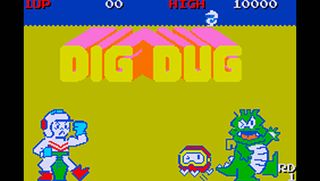
6. Namco Museum (GBA)
The Game Boy was the longest lasting handheld of all time, with one version or another being Nintendos portable breadwinner for more than a decade. When it was finally time to launch a true successor in 2001 with the Game Boy Advance, youd think Nintendo would have had a ton of great stuff ready--but it was slim pickings that June. And if a retailer forced you to buy bundled games alongside the system, you might think you were safe picking up a Namco Museum. Sadly, that couldn't be farther from the truth: the game's paltry selection of content and corner-cutting were obvious as soon as you plugged it in.
The emulation of arcade classics like Ms. Pac-Man and Galaga ran smoothly enough, and at that point, they hadnt been completely run into the ground by rereleases. However, you only got five brief arcade games for full retail price, and no ability to save. Battery-backed memory was the norm in 1991, but ten years later the publisher was too cheap to offer a way to save anything in the game. Whats the point of breaking the high score in DigDug if the game cant remember it once its turned off?
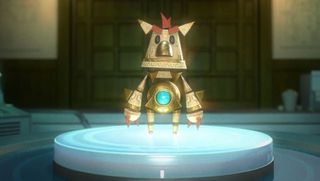
5. Knack (PS4)
The PS3 had many unforgettable games, but it lacked many of the family-friendly, Nintendo-esque franchises that Sony harbored on the PS1 and PS2. The PS4 looked ready to rekindle that tradition with Knack, the first game ever shown for the console. The cute main character and platforming were reminiscent of the Crash Bandicoot and Ratchet games--no doubt because Mark Cerny had been involved in both franchises and was directing Knack with Sonys Japan studio. Clearly, greatness awaited.
Or not. Unfortunately, it seemed our hopes were misplaced. As our Knack review will attest, the premise was boring, the characters acted like Pixar rejects, and Knack himself was more than a little annoying. From a gameplay standpoint, it barely improved on the PS2 games it was in tribute to, presenting what would've been average platforming in 2002 with some extra particle effects. The PS4 still had an alright launch, but we highly doubt well be seeing another Knack any time soon.
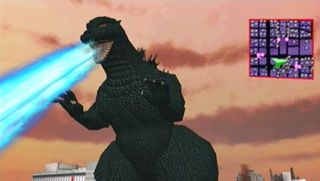
4. Godzilla Generations (Dreamcast)
Okay, so Sega pretty much ruined its chances of winning the 32-bit era starting with the Saturns crummy launch--but fans were sure that was going to change with the Dreamcast. It would look fantastic, be easy to develop for, and launch with great games, including a true 3D Sonic adventure and a game starring the King of the Monsters, Godzilla. Japan (and savvy importers in the West) got to play the Dreamcast first on November 27, 1998, nearly one year before other territories--and those people got a Godzilla title that still lives in infamy.
Godzilla Generations was as deep as a puddle after a light spring rain, giving players a paltry five iconic monsters to demolish cities with. Of course, you couldnt actually see much of the unexciting destruction, because the terrible camera would rather fill the screen with Godzillas poorly rendered hide. It was shallow even by arcade game standards, and many balked at paying full retail price for it. Despite Godzillas massive Western appeal (hes arguably more popular here than in Japan), Generations never saw release outside of its home country. Clearly Sega had lost all confidence in the brawler, and its mercy killing is something American Godzilla fans should see as a favor.
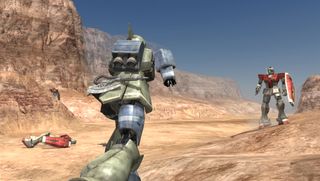
3. Gundam: Crossfire (PS3)
The PS3 had a lot of bravado (some may say hubris) as the 2006 launched approached. According to Sony, the 360 was nothing compared to the power of PS3s CELL processor, cutting-edge tech which PlayStation CEO Ken Kutaragi said was "...a machine with supercomputer calculation capabilities for home entertainment. After all the hype, gamers expected quite a lot. What they got were games that were looked identical to their 360 counterparts--and in some cases, they ran worse on Sonys console. The PS3's launch lineup was a massive disappointment--but lets single out Gundam: Crossfire for its underhanded attempt at conning gamers.
Crossfire was announced early with a fancy CG trailer, which showed the promise of the PS3s power with regards to giant robots fighting. That was as far from reality as possible, because the final product would've been crappy even by PS2 standards. It was a broken, ugly mess that was clearly shoved out the door in time for launch, by a team that couldnt yet grasp how to harness the PS3s hardware. Even the most hardcore Gundam fans rejected this rushed misfire, making Crossfire one of the worst reviewed launch games of all time.
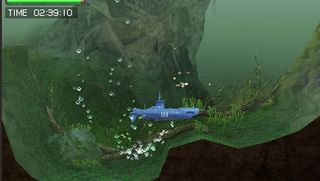
2. Steel Diver (3DS)
Shigeru Miyamoto, creator of Mario, Zelda, and dozens more classics, is likely the most respected man in gaming. If he has a new idea, people want to see it, especially if said idea incorporates Nintendos new stereoscopic 3D system. Thats how Steel Diver was sold to the world at E3 2010, after the underwater shooter had been retooled from a long-cancelled DS project. But all Steel Diver accomplished was proving that even Miyamoto isnt perfect.
Steel Diver came out with the 3DS in March 2011, bringing roughly three hours of gameplay to eager fans. The game had such little content--along with utterly lame use of 3D and some very frustrating levels--that it ended up being the worst letdown of a notoriously lackluster system launch. As a curious footnote, Steel Diver was repackaged as a free-to-play download by Nintendo, which either makes it a trailblazer for the publisher, or something so unwanted that Nintendo shoved it out the door as a F2P experiment. You be the judge.
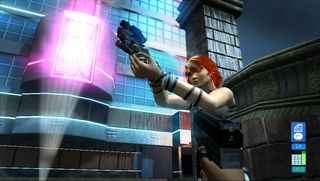
1. Perfect Dark Zero (360)
Microsoft has spent billions on acquisitions across so many industries, but its purchase of Rare will go down as one of its most wasteful. Once co-owned by Nintendo, Rare was among the top developers for the N64, making classics like GoldenEye 007, Banjo-Kazooie, and Perfect Dark. In 2002, Microsoft spent a cool $375 million to buy Rare Ltd., which sounded like a huge hit against Nintendo. In the end, it was a move that ultimately had very little impact on the original Xbox and its competitors. After a generation of delays and spotty releases like Grabbed by Ghoulies and the Conker remake, Rare looked to be reborn on the 360, with the glitzy platformer Kameo and the real main event: Perfect Dark Zero, the long-awaited return to one of Rares top franchises.
Then Wall Guy happened. Perfect Dark Zero garnered some bad buzz early on thanks to screens like Wall Guy--and even though the final title was solid (if rushed), it was hardly what shooter fans wanted. Most early 360 adopters gravitated to Call of Duty 2 instead, while PDZ languished as an utter disappointment, as much from poor design as from the skyhigh expectations of the very underwhelmed fans. If only Rare fanboys knew what PDZ's failure would lead to: a generation of horrendous Rare-made motion games. Had more bought a copy back then, this miserable timeline could've been avoided. We hope youre proud of yourselves.
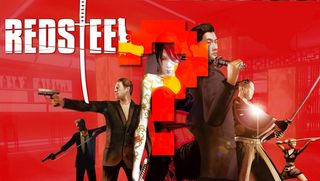
Dont get discouraged
So those were our biggest heartbreaks from the launches of gamings past. Were you hurt worse by any other day-one titles? Share your pain in the comments below! (And yes, we did forget to mention Red Steel. Let's just say that Red Steel 2's vast improvements wiped our memories of the garbage original.)
And if you're looking for more day one console history, check out the top 7 launch games of all time and the 10 weirdest launch games of all time.

Henry Gilbert is a former 12DOVE Editor, having spent seven years at the site helping to navigate our readers through the PS3 and Xbox 360 generation. Henry is now following another passion of his besides video games, working as the producer and podcast cohost of the popular Talking Simpsons and What a Cartoon podcasts.











